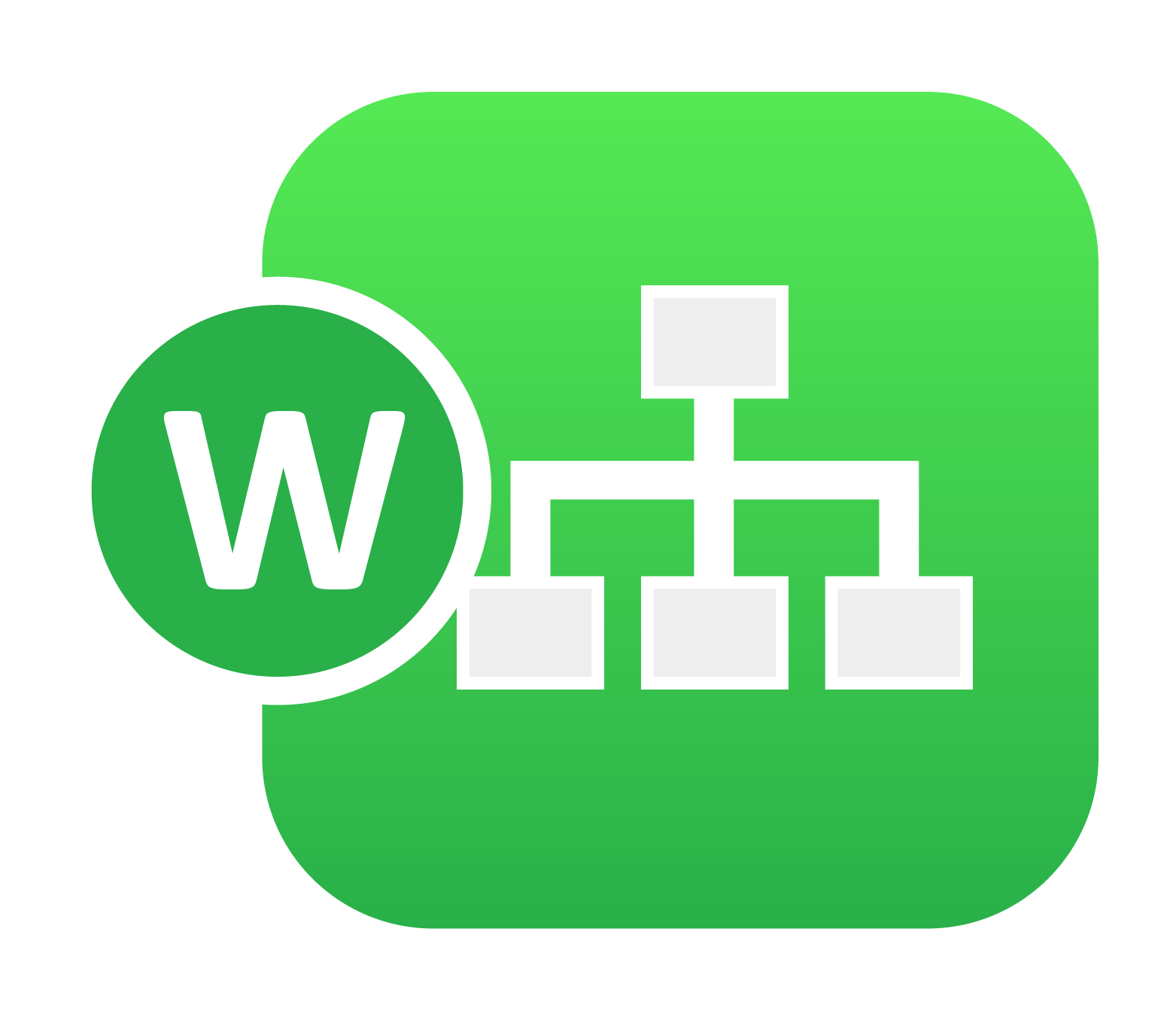
31.  Workflow Glossary¶
Workflow Glossary¶
31.1. A¶
Ancestor Node¶
Any worker that is connected to and proceeds the current worker.
AutoFit¶
Make the entire workflow viewable on the canvas.
31.2. B¶
Besier Curve¶
Use curved instead of straight lines for worker connections. This is the default setting.
Birds Eye View¶
An elevated/aerial view of the main canvas.
31.3. C¶
Curve¶
Curve is a 2D data representing a series of X-values and its associated Y-values. It can be visualized in a tabular format or in a curve plot
| X | Y |
|---|---|
| 0 | 0 |
| 1 | 2.0 |
| 2 | 4.0 |
| 3 | 5.0 |
Canvas¶
The area where we build, edit and interact with our workflow. This is where we see the workers and worker connections.
Checkpoint¶
A worker under the Shapes Menu where we can set a check point in the workflow to validate if the workflow is performing as desired.
Child Node¶
Any worker that is connected to and succeeds the current worker.
Collector¶
A worker under the Shapes Menu where we can collect data from previous workers. This is great if we want to collect data sooner in the workflow than the end worker.
Comment¶
A worker under the Shapes Menu where we can add a comment at a particular point in the workflow. This is great for when sharing workflows with others to inform them about important workflow details.
CSV String¶
A text that allows one to provide a list of values separated by a Comma as shown below
Apple,Orange,
Displacement,Velocity,Acceleration
0.01,0.02,0.03
Curve I/O¶
A worker under the Shapes Menu for curve specific input and output data. There is great when we are using a lot of curves in a workflow and want to keep it separate from other data for better organization.
31.4. D¶
Dataset¶
A worker input that is a structured input containing rows and columns of data as below
| ID | Name | Type |
|---|---|---|
| 1 | Apple | Fruit |
| 2 | Pepper | Vegetable |
| 3 | Walnut | Nut |
Dataset I/O¶
A worker under the Shapes Menu for dataset specific input and output data. There is great when we are using a lot of datasets in a workflow and want to keep it separate from other data for better organization.
Decision¶
A worker under the Shapes Menu that can be set up to validate outputs from previous workers and then decide which way to continue the workflow based on the validations.
Decision Hub¶
A worker under the Shapes Menu that is similar to the basic decision worker but can be used to create multiple decision paths.
Decision Tree¶
A worker under the Shapes Menu that takes an input dataset and helps decide the resultant dataset with a bunch of decisions created using in a nicely organized Tree view. The nodes in the tree view can be assigned decisions using a simple Data Filters and can also carry an assigned workflow which will help run any workflow from the library based on the decision.
Define Table¶
This is a worker input to associate a numeric value to a curve as shown below. This is typically used for strain-rate data but can be used for any generic purpose usage
| Value | Curve |
|---|---|
| 0.001 | Curve1 |
| 0.002 | Curve2 |
| 0.003 | Curve3 |
Dependent Worker¶
Any worker that is necessary for the current worker to execute successfully.
31.5. E¶
Edge Junction¶
A worker under the Shapes Menu used for a stand-in worker for better execution.
Edit Mode¶
Workflow canvas view for editing/building the workflow. Open this mode by creating a new workflow or clicking a workflow’s name on the workflows main page.
END¶
A worker under the Shapes Menu automatically added to new workflows that marks the end of execution. They can be set up to collect Dany data used or computed by the workflow.
Execute, Execution¶
When the workflow performs sequential worker computations from chosen start worker to chosen end worker.
Execution Mode¶
Workflow canvas view for executing the workflow. Open this mode via the play button on the workflows main page. Also called Run Mode.
31.6. F¶
Failed Execution¶
When the workflow can no longer proceed in execution because something went wrong such as missing or unusable data.
31.7. G¶
Generic Text Parser GUI Worker¶
A worker under the Shapes Menu which can help parse any form of Text files, add anchors within them, define custom variables based on delimiters, syntax highlighters and more. The output of this worker contains two datasets for saved anchors and variables respectively which can be used by other workers in the workflow.
31.8. H¶
31.9. I¶
Image Classifier Worker¶
A worker under the Shapes Menu that takes an Image as an input and allows categorization and data labeling groups of pixels or vectors within the image based on specific rules. The output of this worker contains a datasets of all the saved labels/annotations which can be used by other workers in the workflow.
Idl Execution¶
When the workflow is paused or not proceeding in execution mode.
Inheritance¶
All workers that proceed the current worker and are necessary for its successful execution.
Input¶
Data, values or specifications uploaded, chosen from sample or manually added needed for a worker to execute successfully.
Input Manipulator¶
Create a mini loop in execution at the chosen worker to achieve an objective. The user can manipulate the inputs in a backward direction in order to achieve the desired result.
31.10. J¶
31.11. K¶
31.13. M¶
Map Definitions¶
In some instances, map definitions (FROM => TO) needs to be provided. This can be provided in a simple TEXT format as shown below. Multiple map definitions are separated by a COMMA (,) while FROM and TO are separated by either =>, =, or :
Displacement=>Peak_Displacement,Orange=Apple,Paris:Detroit
Map Definitions¶
31.14. N¶
Newton Curve Viewer¶
Curve Plotting application that links with the Workflows application. It allows us to view and explore curve outputs or inputs.
New Workflow¶
Start creating a workflow from scratch by clicking the blue button at the top right of the workflows main page.
Node¶
A worker that is present as a point in the workflow.
Notification¶
A worker under the Shapes Menu that notifies the user at a certain point in the workflow execution.
31.16. P¶
Polling¶
Check the status of a worker especially as part of a repeated cycle. For example, in a worker execution for simulation submission, we would “poll” to the server to check the current status until all the back-end processing is completed and wait for “status” = “finished”. Once this is received, the execution moves on.
PPT Reporter¶
A worker under the Shapes Menu that generates reports based on workflow data. View input and output data using the PowerPoint builder or the Simlytiks application as well as download the report.
Processing Execution¶
When the workflow is succeeding in execution.
Progress Bar¶
Bar at the top right corner in run mode that shows the status of the workflow execution.
31.17. Q¶
31.18. R¶
Remote Look Up¶
This is a worker input that allows to select platform assets such as simulation, templates, workflows etc. The full list of available platform assets are shown below
Run¶
Another name for execute, when the workflow performs sequential worker computations from chosen start worker to chosen end worker.
Run Mode¶
Workflow canvas view for running the workflow. Open this mode via the play button on the workflows main page. Also called Execution Mode.
31.19. S¶
Select Multiple¶
Choose multiple workers at the same time to bulk edit.
Run¶
Another name for execute, when the workflow performs sequential worker computations from chosen start worker to chosen end worker.
Run Mode¶
Workflow canvas view for running the workflow. Open this mode via the play button on the workflows main page. Also called Execution Mode.
31.20. S¶
Select Multiple¶
Choose multiple workers at the same time to bulk edit.
Shapes¶
Operation workers used for organizing, collecting, reporting, steering, starting or ending workflows. These can be found under the Shapes Menu, the diamond symbol on the left-side panel in edit mode.
START¶
A worker under the Shapes Menu automatically added to new workflows that marks the beginning of execution. They are used to hold all input data for the workflow.
Switch¶
A worker under the Shapes Menu which turns execution on/off for the part of the workflow that proceeds it.
31.21. T¶
Template JSON Export¶
Export a workflow JSON file that has the worker/workflow structure without the data.
Text Parameterize GUI Worker¶
A worker under the Shapes Menu which will help parameterize a text file (specifically a Keyword file) using several options in the GUI. Text parameters can be pure text or use parameter values by using a special syntax. All parameters are saved within the document upon “Save” and the parameters are also saved as a pure dataset which can be used by other workers in the workflow.
31.22. U¶
User Interception¶
When users choose, confirm or edit the workflow at a particular point during the execution.
31.23. V¶
Validations¶
Set up specifications for workflow data (generally outputs) to follow a certain criteria. This is generally used for setting up decision workers and for making sure the workflow is executing a certain or desired way.
Value¶
This is where we add actual data for our inputs.
Viewers¶
View any data for the current workflow which includes any inputs or outputs. Find them under the eye icon on the left-side panel in both modes.
Visualization Workers¶
Incorporate a simlytiks visualization for curves or parallel coordinates into the workflow. Find them under the curve icon on the left-side panel in edit mode.
Video Analyzer Worker¶
A worker under the Shapes Menu that is a video analytics service that enables extraction of actionable insights from stored videos. This worker takes a Video for an input, allows creating of custom regions within the video and keeps a track of displacement, velocity and acceleration of each of the regions. These output responses can also be viewed as curves with respect to time. The output of this worker contains a datasets of all the regions along with the analyzed data which can be used by other workers in the workflow.
31.24. W¶
Worker Edges¶
The four sides of a worker that can have lines drawn to connect to other workers. START and END only have three edges as they can’t have lines drawn before or after a workflow ends respectively.
Worker Info¶
A worker under the Shapes Menu that can pull up any worker information in the workflow.
Workers List¶
Library of all available workers that can be found under the cog icon on the left-side panel in edit mode.
Workflow Provider¶
A worker under the Shapes Menu that allows the user to run any workflow from his/her account at any point of time in the Workflow. The first input of this worker is the workflow to be fetched which once selected, extracts all the inputs of the remote workflow and assigns them to this worker thereby providing flexibility in customization of the inputs (by overriding the values manually or mapping them to any of the current workflow worker I/O). The outputs of this worker are nothing but the outputs of the remote workflow chosen.